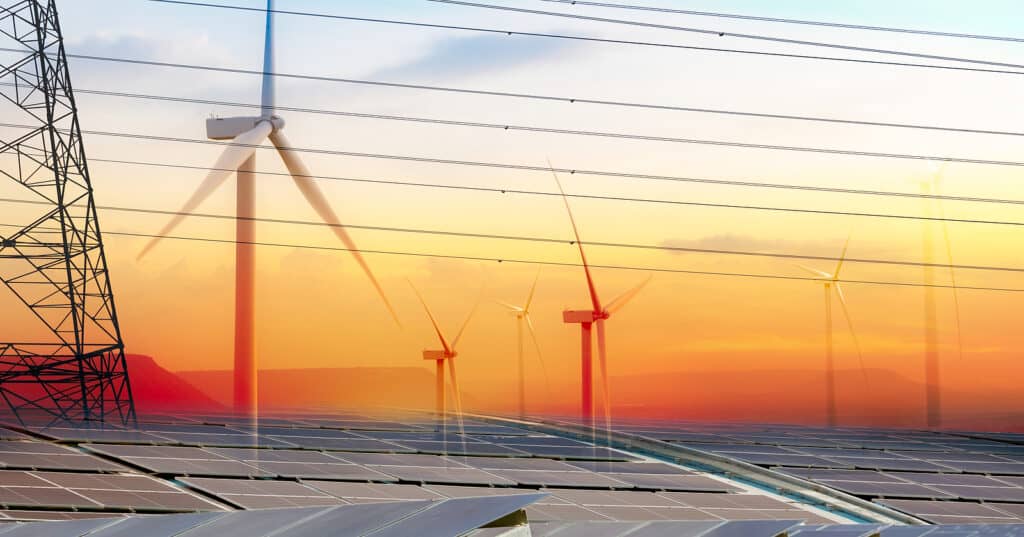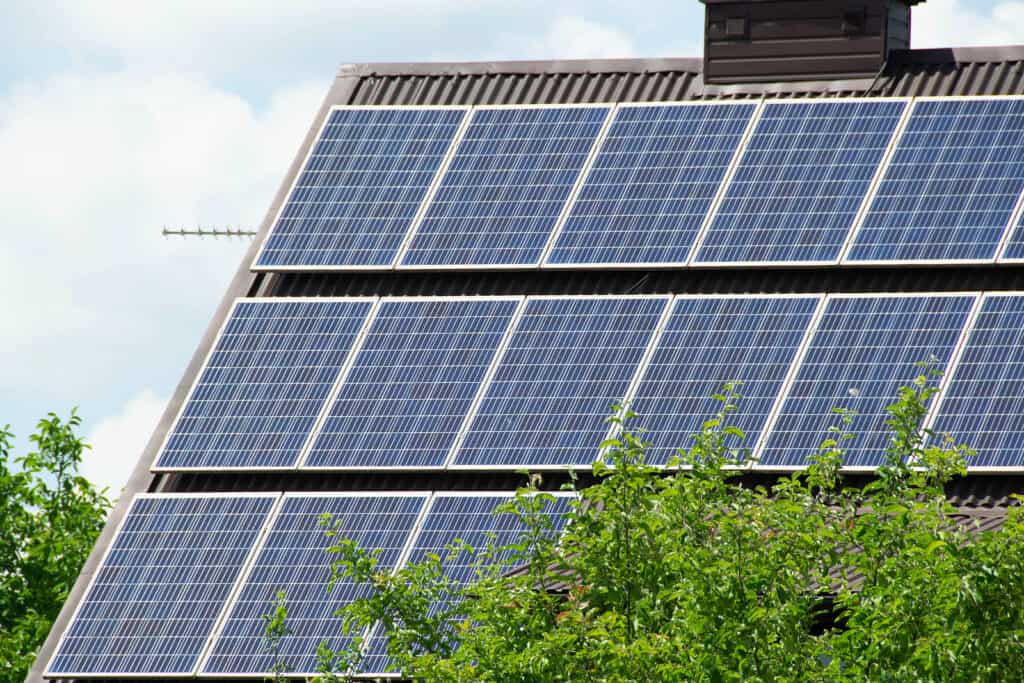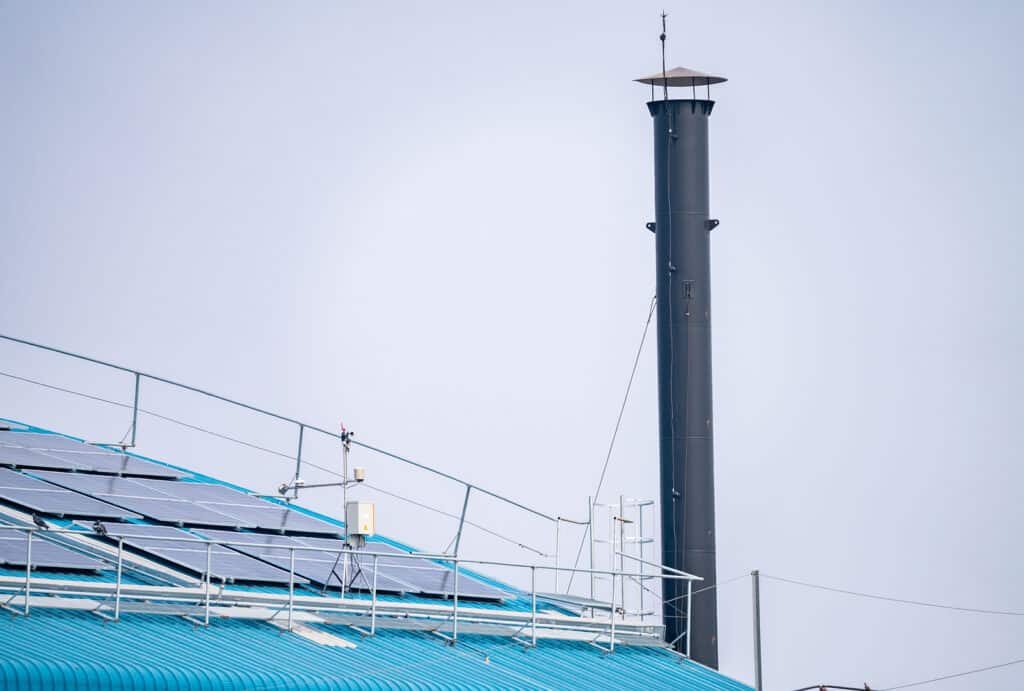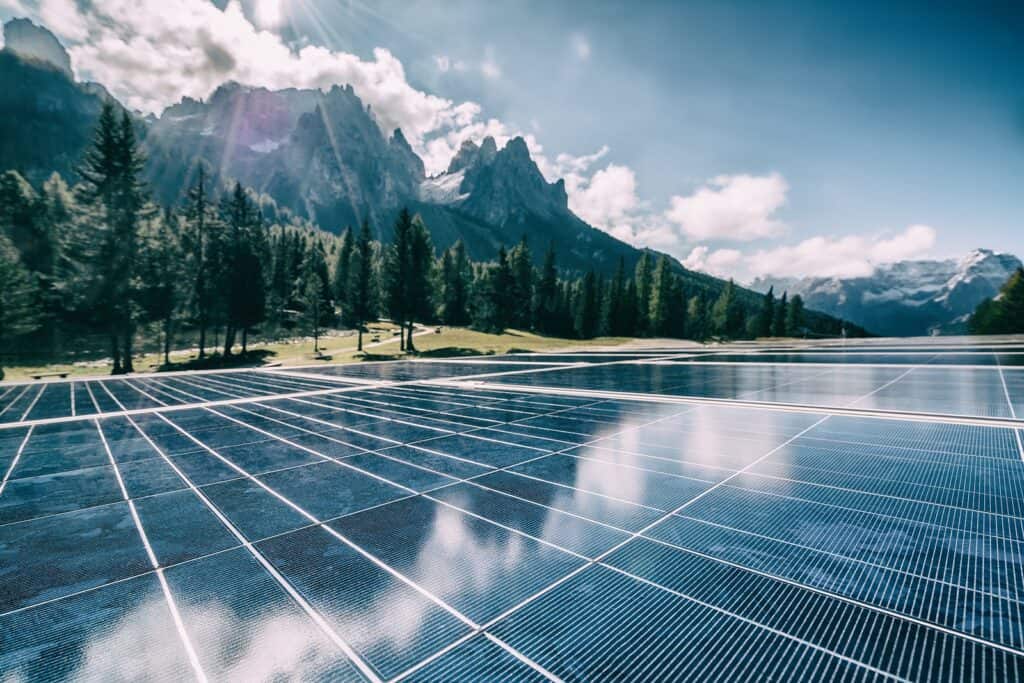The Power of Solar Supercapacitors
As our company strives to make a positive impact on the environment and reduce our energy costs, we have been exploring various renewable energy solutions. While solar panels and wind turbines have gained significant attention, we believe that solar supercapacitors hold incredible potential in revolutionizing the way we store and distribute energy.
In our quest for sustainability, we have come to recognize the power of solar supercapacitors as a game-changer. By installing these advanced energy storage systems, we aim to minimize our dependence on the electrical grid and significantly reduce our electricity bills over the long term.
Solar supercapacitors offer several advantages that make them an attractive option for our company. Firstly, they enable us to harness the abundant and freely available solar energy during the day and store it efficiently for use during times of high demand or when sunlight is limited. This means we can rely less on conventional energy sources and reduce our carbon footprint.
Understanding the Basics: What is a Solar Supercapacitor?
Before we delve into the nitty-gritty of solar supercapacitors, it's important to understand the basic concepts. A solar supercapacitor, also known as a photovoltaic (PV) supercapacitor, is a device that combines the energy generation capabilities of solar cells with the superior energy storage and fast charging characteristics of supercapacitors.
Supercapacitors are energy storage devices that can store and discharge electricity much faster than traditional batteries. They do this without relying on chemical reactions, which makes them more efficient and longer-lasting than standard batteries.
When these supercapacitors are paired with solar cells, the result is a solar supercapacitor. This hybrid device captures sunlight, converts it into electrical energy, and stores it for later use with remarkable efficiency.

How Does a Solar Supercapacitor Work?
A solar supercapacitor is a remarkable device that harnesses solar energy and stores it for later use. Let's explore the intricate workings of this technology in greater detail. The process involves two key steps, each contributing to the overall functionality of the solar supercapacitor:
Energy Capture
The first step in the operation of a solar supercapacitor is the efficient capture of energy from the sun. When sunlight strikes the surface of a solar cell, a fascinating phenomenon occurs. The photons in the sunlight transfer their energy to the electrons within the solar cell, causing them to become excited and enter a higher energy state. As a result, these energized electrons gain the ability to move freely.
The movement of these excited electrons creates an electric current within the solar cell. This current is a flow of charged particles, and it is captured using conductive materials within the solar cell. The captured electric current is then carefully routed towards the supercapacitor for storage, marking the completion of the energy capture stage.
Energy Storage
Once the electric current is directed toward the supercapacitor, the second step commences—energy storage. Unlike conventional batteries, which rely on chemical reactions to store energy, supercapacitors employ a different approach. They store energy in the form of an electrostatic field.
Within the supercapacitor, there are two electrodes separated by a dielectric material. The electrodes are conductive surfaces that allow the flow of electric charge. As the electric current enters the supercapacitor, the energized electrons accumulate on one electrode, while an equal number of electrons are pushed away from the other electrode. This separation of charge creates an electrostatic field between the electrodes.
The key advantage of this electrostatic storage mechanism is its ability to facilitate rapid charging and discharging. Supercapacitors excel in delivering quick bursts of energy and can be charged and discharged repeatedly without significant degradation. This attribute makes supercapacitors highly efficient and durable energy storage devices.

The Benefits of Solar Supercapacitors
Why should you consider solar supercapacitors? Here are four compelling reasons, along with additional details:
High Energy Efficiency
Solar supercapacitors exhibit a remarkable level of energy efficiency. Due to their unique design and properties, they can charge rapidly and retain energy for extended periods. This attribute significantly reduces energy loss during the storage and distribution process, ensuring more efficient utilization of the captured solar energy.
Long Lifespan
Supercapacitors possess an exceptional ability to endure numerous charge and discharge cycles, even numbering in the hundreds of thousands or millions. Unlike traditional batteries that gradually lose their capacity over time, solar supercapacitors maintain their performance and capacity for an extended duration. This longevity translates into a longer lifespan for the supercapacitors themselves, making them a reliable energy storage solution.
Eco-friendly
Solar supercapacitors are environmentally friendly and promote sustainable energy usage. By harnessing renewable solar energy, they reduce dependence on fossil fuels and contribute to a cleaner energy ecosystem. Moreover, the prolonged lifespan of supercapacitors minimizes the need for frequent replacements, which in turn reduces electronic waste and its associated environmental impact.
Versatility
Solar supercapacitors offer versatility in their applications, making them suitable for a wide range of scenarios. They can power various devices, ranging from small-scale electronics like smartphones, wearables, and sensors, to larger-scale systems such as electric vehicles and grid energy storage. This flexibility highlights the adaptability and potential of solar supercapacitors across different industries, contributing to the advancement of sustainable energy solutions.
Rapid Charging
Solar supercapacitors have the ability to charge quickly, allowing for shorter charging times compared to traditional batteries. This feature is especially advantageous in situations where fast charging is required or during intermittent energy generation from solar panels.
Wide Temperature Range
Supercapacitors can operate effectively across a broad temperature range, from extreme cold to high heat. This characteristic makes them suitable for applications in harsh environments where other energy storage technologies may struggle to perform.
Safety
Solar supercapacitors are considered safer than conventional batteries. They do not contain toxic or hazardous materials, reducing the risk of environmental contamination or harm to human health. Additionally, they are less prone to issues such as thermal runaway, which can occur in certain battery chemistries.
Scalability
Solar supercapacitors can be easily scaled up or down to meet specific energy storage requirements. This scalability makes them adaptable to various project sizes, from small-scale applications to large-scale installations, facilitating their integration into diverse energy systems.

Solar Supercapacitors: Applications and Future Prospects
Solar supercapacitors are cutting-edge energy storage devices that are gaining significant attention due to their exceptional characteristics and wide-ranging applications. These devices exhibit high energy efficiency, meaning they can store and release energy with minimal losses. This efficiency is crucial in maximizing the utilization of solar energy, making solar supercapacitors an attractive option for sustainable energy solutions.
One of the notable advantages of solar supercapacitors is their impressive lifespan. They can withstand numerous charge and discharge cycles without significant degradation, ensuring long-term reliability. This durability makes them well-suited for demanding applications where consistent performance and longevity are essential.
The versatility of solar supercapacitors further contributes to their prominence in various sectors. One prominent field is electric vehicles (EVs), where these supercapacitors can store energy harvested from solar panels on the vehicle's roof. By harnessing sunlight, the solar supercapacitors provide an additional source of power for the EV, extending its range and reducing the dependence on traditional grid charging. This capability not only enhances the sustainability of transportation but also reduces carbon emissions and promotes energy independence.
Solar supercapacitors also find utility in power grids and renewable energy systems. They can store excess solar energy during peak production periods and release it during high-demand periods, effectively balancing the electricity supply and demand. By smoothing out fluctuations in renewable energy generation, solar supercapacitors enhance the stability and reliability of power grids, enabling a higher integration of clean energy sources.
Jasper Sikken's Insights on the Role of Supercapacitors in Renewable Energy Systems
response from jasper sikken dec
In December, leading energy storage expert Jasper Sikken offered his perspective on the role of supercapacitors in renewable energy systems. Sikken highlighted the unique role solar supercapacitors play in providing quick energy bursts, backing up power grids, and their crucial role in stabilizing renewable energy sources.
response from jasper sikken june
In June, Sikken emphasized the importance of advances in supercapacitor technology. He spoke on how these improvements allow for better energy retention and faster charging, ultimately leading to increased efficiency in our renewable energy systems.
Sikken's Take on Advancements in Supercapacitor Technology
During a June conversation, Sikken further expounded on the significant strides being made in supercapacitor technology. He emphasized how these advancements allow for better energy retention and faster charging rates, translating to increased efficiency and reliability in our renewable energy systems. As a result, supercapacitors are gradually transforming from being mere components in energy systems to becoming integral elements in the future of renewable energy.

Solar Energy Harvesting and Storage: Lithium-Ion Batteries vs. Supercapacitors
In the realm of solar energy systems, the process of energy harvesting and storage plays a pivotal role. Conventionally, these systems have depended heavily on lithium-ion batteries for storing the energy harvested from the sun. Over the years, solar harvesting into lithium ion capacitor batteries has stood as a testament to reliability in energy storage, serving as the backbone for many renewable energy infrastructures around the globe.
Lithium-ion batteries work through an electrochemical process where ions move from the negative electrode to the positive electrode during discharge and reverse during charging. This mechanism allows for the storage and release of energy, facilitating the functionality of countless devices and systems.
However, as dependable as lithium-ion batteries have been, they carry certain limitations that can impede optimal energy usage. One such limitation is their comparatively long charging times. In an era where time efficiency is crucial, the lengthy charge cycles of lithium-ion batteries present a substantial bottleneck.
Enhancing Solar Panel Efficiency with Capacitors
The integration of capacitors into solar power systems stands as a potent strategy for enhancing their efficiency and operational longevity. Capacitors, essentially energy storage components, function by storing and swiftly releasing electrical energy. The ability to hold onto this energy and let it go when needed is central to their function within an energy system, and their application within solar harvesting into liion battery systems can lead to considerable improvements in performance.
Solar power systems traditionally convert sunlight into direct current (DC) electricity. However, the energy harnessed from the sun is not always uniform due to factors like changing weather conditions and varying daylight hours. These inconsistencies can lead to power fluctuations that potentially decrease the system's overall efficiency.
This is where capacitors come into play. By rapidly storing and discharging energy, capacitors can act as a buffer against these power fluctuations. They store excess energy generated during peak sunlight hours and release it during periods of low sunlight or high demand, effectively maintaining a steady power output.
The Supercapacitor Battery: Bridging Power Density and Energy Density
It stands as a groundbreaking innovation that embodies the perfect amalgamation of power density and energy density – two key metrics that govern the performance of any energy storage system. Understanding the implications of this convergence requires a deeper appreciation of these two key terms.
Power density, in simple terms, refers to the rate at which energy can be delivered or drawn from a device, while energy density pertains to the amount of energy stored in a device relative to its volume or mass. Traditionally, these metrics have represented a trade-off in energy storage devices, with systems designed for high power density typically struggling with energy density, and vice versa.
Lithium-ion batteries, for instance, are characterized by high energy density, meaning they can store substantial amounts of energy. However, their power density is relatively low, which translates into longer charging times and slower energy delivery.
Solar Capacitor: A New Era in Energy Storage
In the constantly evolving realm of energy storage technology, the emergence of the solarcapacitor, also known as the solar supercapacitor, is causing a significant stir. This groundbreaking device symbolizes the dawn of a new era, offering an avant-garde approach to harnessing and storing solar energy.
At its core, a solar supercapacitor is an embodiment of technological innovation and efficiency. Its design enables it to capture solar energy with unprecedented effectiveness and convert it into a storable form, ready to be discharged when required. This function positions the solar supercapacitor as a key player in the domain of renewable energy, propelling the sector towards an even more sustainable future.
Solar supercapacitors achieve this feat by leveraging their inherent physical properties. Unlike traditional batteries that store energy through chemical reactions, supercapacitors store energy through electrostatic fields. This mechanism, in combination with the energy-harvesting capability of solar cells, enables solar supercapacitors to rapidly charge and discharge, thus circumventing the limitations of slower charge cycles seen in traditional energy storage solutions.
Applications of Supercapacitors: Versatility Across Applications
The applicability of supercapacitors for energy storage extends from large-scale energy grids to portable consumer electronics. Their impressive versatility is evident in their usage in electric vehicles, renewable energy systems, power backup solutions, and even personal devices like smartphones and laptops. This broad range of applications further reinforces the potential of using capacitors with solar panels for energy storage in transforming our energy future.
Conclusion
In conclusion, as our company explores renewable energy solutions, the power of solar supercapacitors has captured our attention. These advanced energy storage systems offer numerous benefits that align perfectly with our goals of reducing dependence on the electrical grid and minimizing long-term energy costs.
Solar supercapacitors provide us with a unique opportunity to harness abundant solar energy efficiently. By capturing and storing this energy during the day, we can significantly reduce our reliance on conventional energy sources and decrease our carbon footprint. This aligns perfectly with our commitment to environmental sustainability.
The advantages of solar supercapacitors go beyond their energy efficiency. Their long lifespan ensures reliable and consistent performance, reducing the need for frequent replacements and minimizing electronic waste. Moreover, their versatility allows us to explore various applications, from powering electric vehicles to integrating them into our power grid infrastructure.

